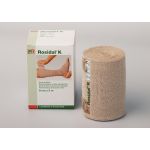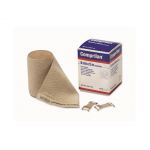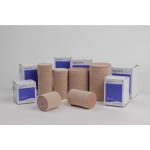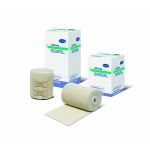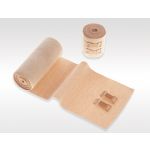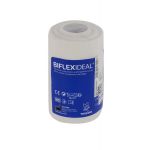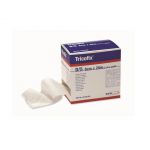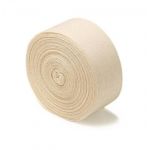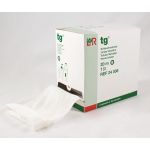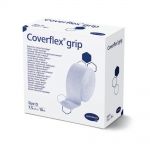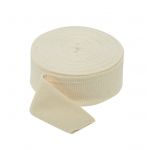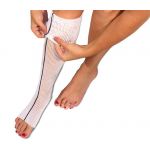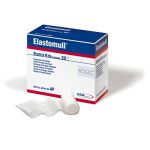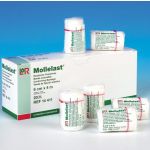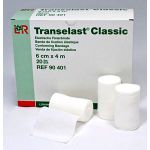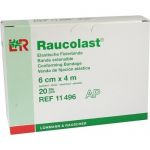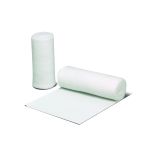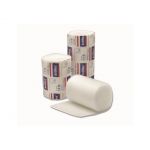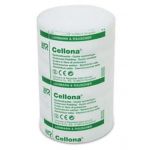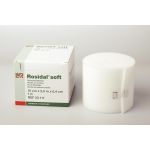Bandaging Supplies
Lymphedema Bandages, Lymphedema Wrapping Supplies, And Compression Bandages For Lymphedema
We have all of the bandages, wrapping supplies, and compression bandages that you need for the treatment of lymphedema, edema, and other medical conditions.
These lymphedema products can be used in the initial phases of treatment for lymphedema, as well as the maintenance and prevention phases. By providing gradient pressure, lymphedema bandages help promote the flow of lymphatic fluid and help reduce swelling.
Shop our bandaging supplies with pre-tax savings using your FSA or HSA account!
Lymphedema Bandages, Wrapping Supplies, And More
When the lymph system has been damaged (often because of cancer and/or cancer treatments), lymph fluid becomes trapped, which causes swelling. A lymphedema bandaging system provides the gradient pressure needed to help drain fluid out of the affected area of the body.
We have everything you need to create an effective lymphedema compression system, including:
- compression bandages for lymphedema (short stretch, medium stretch, and long stretch)
- compression wraps for lymphedema
- tubular stockinettes for lymphedema
- tubular elastic bandages for lymphedema
- padding for lymphedema bandages
- foam for lymphedema bandages
- swell spots for lymphedema bandages
- gauze for lymphedema bandages
- adhesive bandages for lymphedema
- cohesive bandages for lymphedema
- tape for lymphedema bandages
- ready-made kits for lymphedema bandaging
Lymphedema Bandages And Wrapping Supplies From Some Of The Top Brands
Our large selection of lymphedema bandaging products come from some of the top manufacturers of lymphedema supplies, and include:
- Comprilan lymphedema bandages and supplies
- Juzo lymphedema bandages and supplies
- Jobst lymphedema bandages and supplies
- JoviPak lymphedema bandages and supplies
- Sigvaris lymphedema bandages and supplies
- Solaris lymphedema bandages and supplies
- Rosidal K lymphedema bandages and supplies
- BiaForm lymphedema bandages and supplies
- SoftCompress lymphedema bandages and supplies
A Complete Lymphedema Bandaging System For Compression
Lymphedema bandaging can vary depending on whether you’re in the Complete Decongestive Therapy (CDT) phase, the maintenance phase, or the prevention phase. Generally, however a lymphedema wrapping system will include:
- an inner liner that protects your skin (a tubular stockinette or tubular elastic bandage)
- gauze (to wrap the toes or fingers and secure the foam padding in place)
- foam or padding which helps protect the skin and tissue and provides even distribution of pressure from the compression bandage
- compression bandages or wraps (which provide the high working and low resting pressure to move lymphatic fluid out of the affected area)
FAQs About Lymphedema Bandaging
Lymphedema bandaging, a cornerstone in the management of lymphedema, involves the application of multiple layers of bandages to reduce swelling and improve lymphatic flow. Below are some of the most frequently asked questions about lymphedema bandaging.
Lymphedema bandaging is a component of Complex Decongestive Therapy (CDT), and it involves the application of multiple layers of compression bandages. Lymphedema bandaging helps reduce lymphatic fluid buildup by applying pressure to affected limbs, which can help promote fluid movement and reduce swelling.
Lymphedema bandaging typically involves the use of a stockinette, padding and foam, and a short-stretch bandage to apply a gradient pressure. The compression is highest at the distal end of the limb (farthest from the body) and decreases towards the proximal end (closer to the body). This gradient pressure encourages the flow of lymph fluid back towards the trunk of the body, aiding in the drainage of the fluid and reduction of limb volume.
Lymphedema bandaging typically involves several layers, including a stockinette to protect the skin, padding to distribute pressure evenly and cushion the limb, and a short-stretch bandage to provide the necessary compression. Foam or other specialized materials may be added for additional shaping and support.
Lymphedema bandaging should initially be performed by a certified lymphedema therapist, or other qualified healthcare provider, who can assess the condition and demonstrate the correct bandaging techniques. With proper training, patients and/or their caregivers might be able to learn to apply the bandages themselves as part of an ongoing home management plan.
The frequency of lymphedema bandage changes can vary depending on the severity of the lymphedema and the amount of fluid being produced. Initially, bandages might need to be changed and reapplied by a therapist or healthcare provider several times a week. As the limb size decreases, regular reapplication helps ensure effective compression.
Lymphedema bandages should not be uncomfortable, if they are applied properly. The lymphedema bandaging system is designed to apply a gentle pressure that is effective, without causing pain. If the bandaging causes pain, numbness, or tingling, it might be too tight and/or incorrectly applied, and adjustments should be made.
Lymphedema bandages need to be kept dry, and they should be removed before bathing or showering. If you need to bathe or shower between changes of your lymphedema bandages, you should use waterproof protectors.
If your lymphedema bandages get wet, they should be removed, and the limb should be dried thoroughly. Wet bandages can lead to skin irritation or infection. To maintain the necessary compression, dry lymphedema bandaging should be applied as soon as possible.
If lymphedema bandages are not applied properly, they can cause skin irritation, pressure sores, and/or restricted circulation.
How long you will need to use lymphedema bandaging depends on your condition and your response to treatment. After the initial intensive phase of lymphedema treatment, many people are able to transition to a maintenance phase and can start using compression garments, instead of bandages.
While you are wearing lymphedema bandages, light to moderate exercise is often encouraged, because it can promote lymph flow. However, it is important to avoid strenuous activities that could dislodge the bandages or cause excessive sweating, which might lead to skin issues under the bandages.
Skin care is a critical component of effective lymphedema management. You should keep your skin clean and moisturized, to prevent dryness and cracking. Check your skin daily for any signs of irritation, infection, or pressure marks from the bandages, and promptly address any issues.
Lymphedema bandaging involves wrapping the affected limb with layers of short-stretch bandages, and adjusting the compression for fluctuations in swelling. Compression garments, on the other hand, offer a more convenient, but less customizable, form of compression. The garments are typically used after the reduction phase, to maintain limb volume.
While lymphedema bandaging is effective in managing the symptoms of lymphedema, it is not a cure for the condition. Lymphedema is typically a lifelong condition that requires ongoing management, including bandaging, compression garments, manual lymphatic drainage, and exercise.
For more information about our lymphedema bandaging products, please call (800) 700-1032, or e-mail: info@bandagesplus.com.
••••••••••••••••••••••••••••••••••••Medicare Pays For Lymphedema Products
Please note: Thanks to the Lymphedema Treatment Act, which took effect on January 1, 2024, Medicare began to pay for lymphedema products for those who have Medicare B coverage and meet certain other coverage criteria. Please visit our website page covering the details of the Lymphedema Treatment Act to obtain more information about how Medicare pays for lymphedema garments, wraps, and bandages


